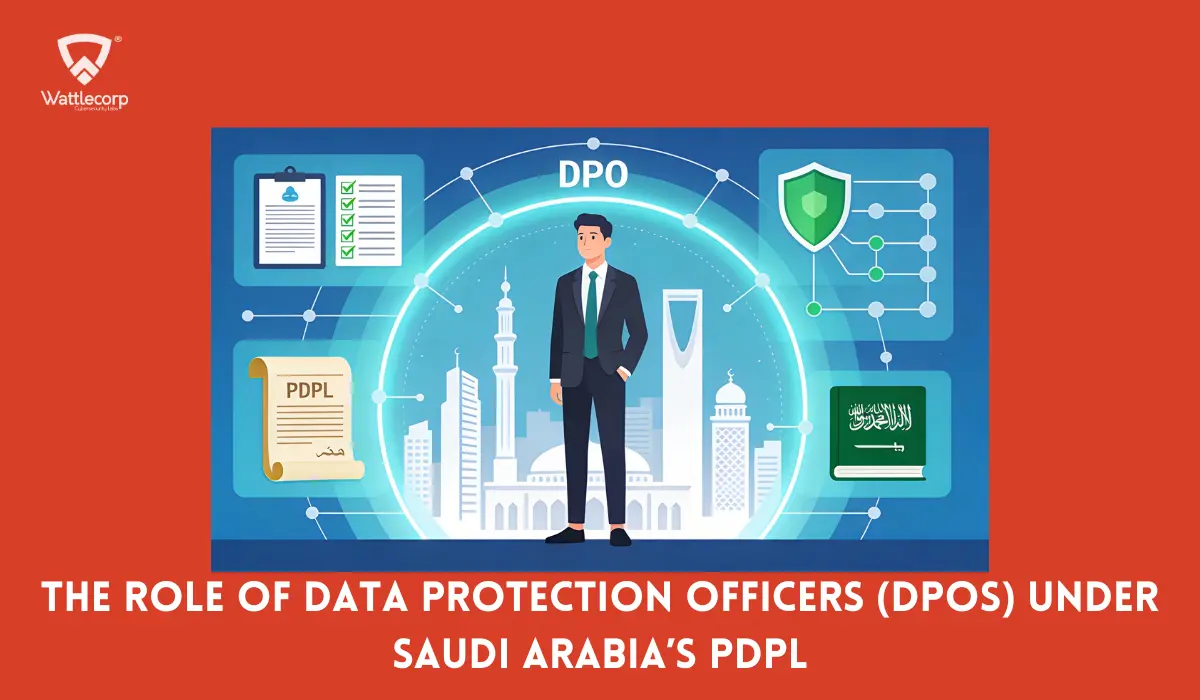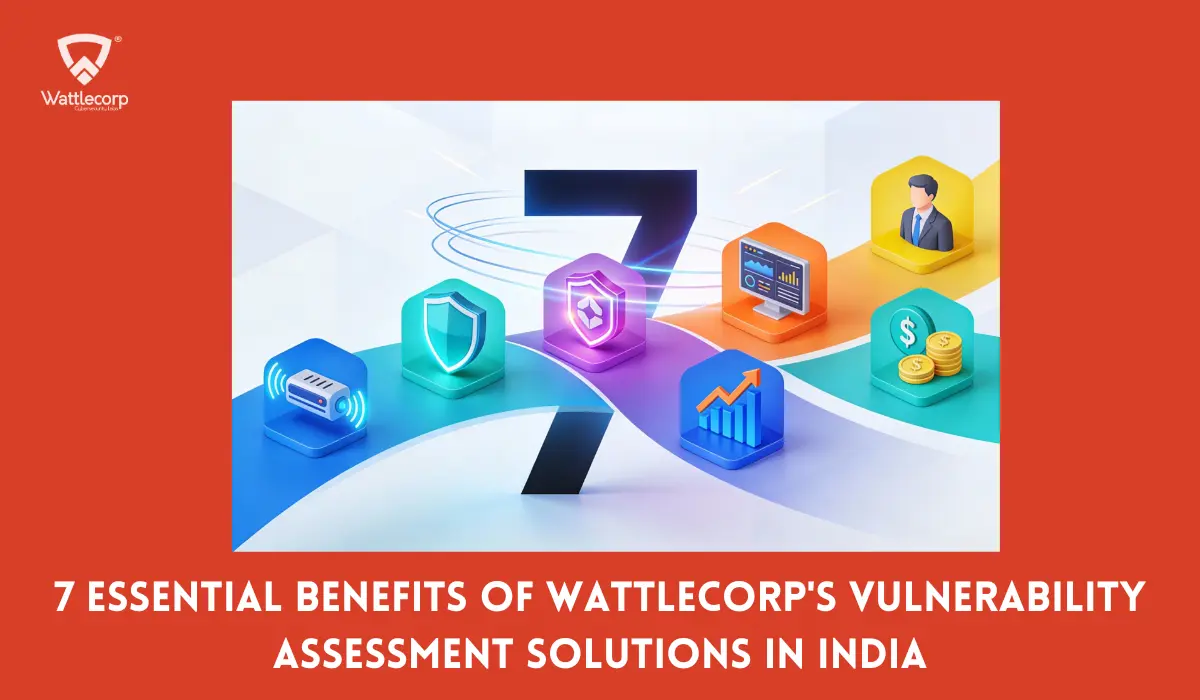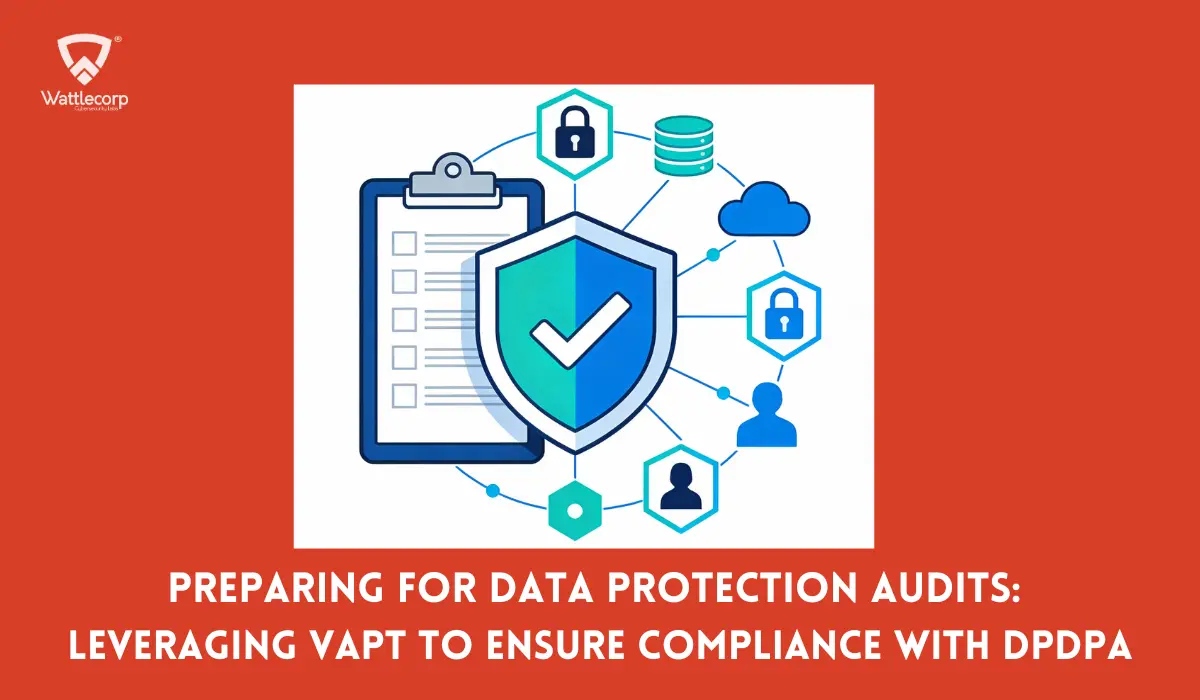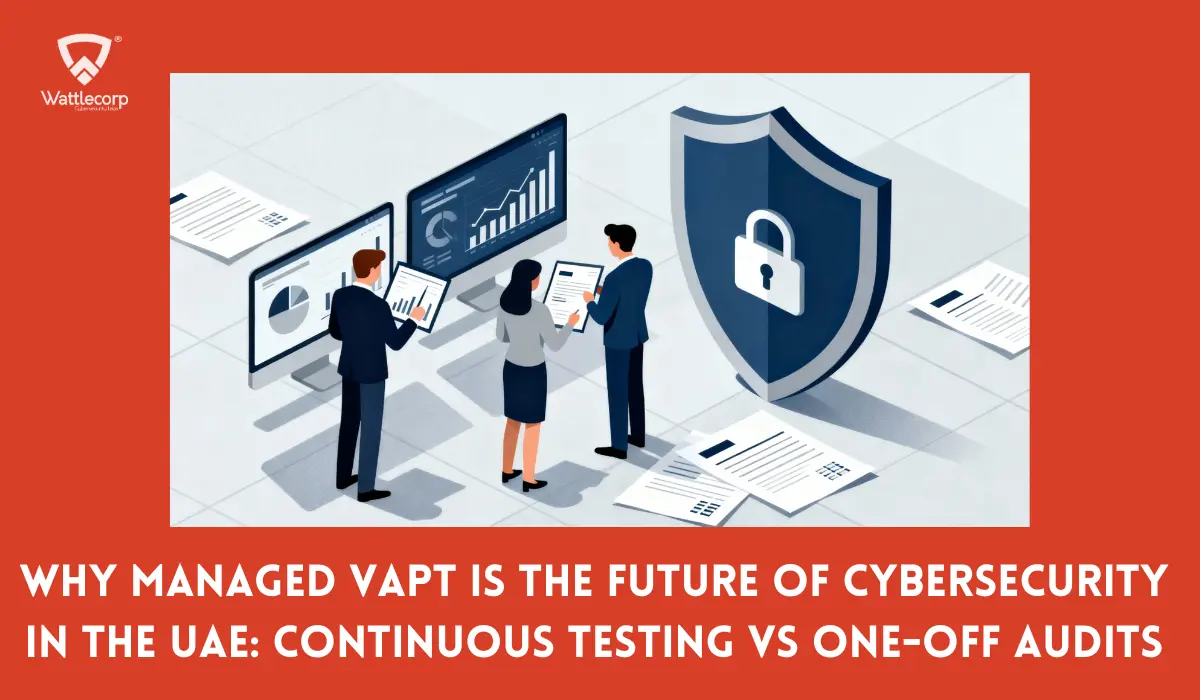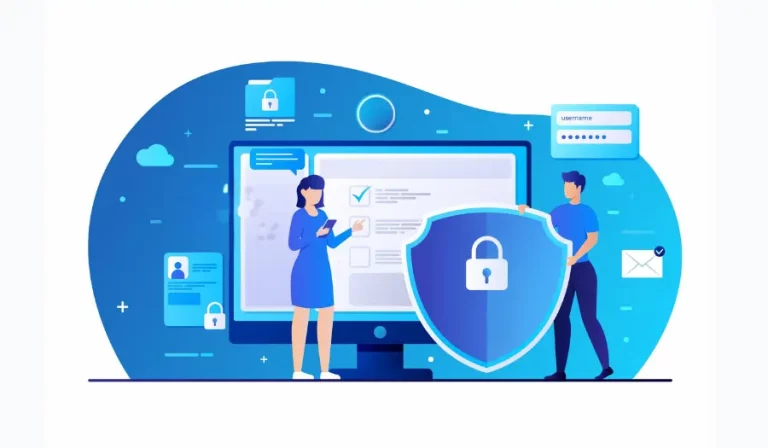We are globally advancing in software solutions in multiple industries and security can no longer be an afterthought. Software security vulnerabilities disrupt the working of businesses in addition to the operations slowdown. Imagine a situation where an organization’s flagship application is facing downtime due to a small security breach. The customer trust would be broken and obviously, the finances would be shaken.
This is where DevSecOps comes in as an essential element—a much-needed methodology that ensures security in the development process. Here is everything you must know.
Table of Contents
Toggle- What is DevSecOps?
- What is DevSecOps methodology?
- Working of DevSecOps
- What are DevSecOps tools?
- What is the difference between DevOps and DevSecOps?
- What is DevSecOps in Cybersecurity?
- How DevSecOps improve security?
- Benefits of DevSecOps for organizations
- Challenges in DevSecOps implementation
- DevSecOps FAQs
What is DevSecOps?
DevSecOps is a combination of Development, Security, and Operations. This practice incorporates security as a shared responsibility throughout the entire software development lifecycle. Generally in traditional approaches the security part is integrated at the later stage of development. However in DevSecOps the proactive measures are introduced from the start.
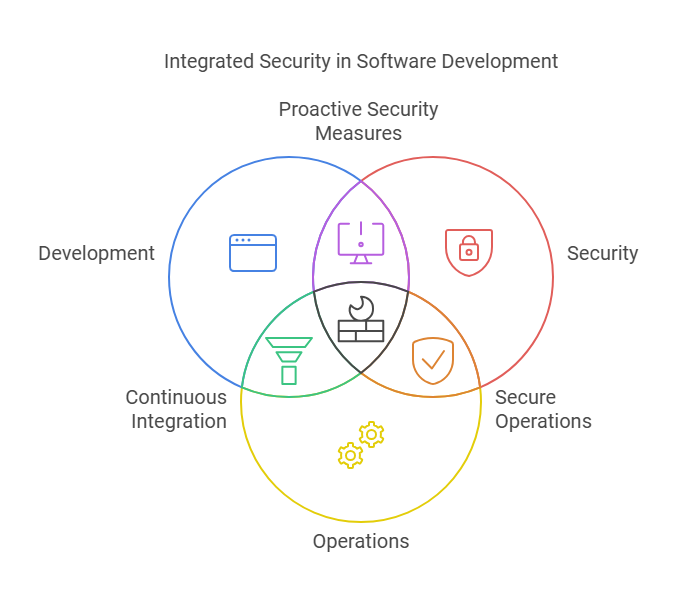
What is DevSecOps methodology?
In software development DevSecOps functioning involves integration of security in each phase of the development process. The foundation is DevOps and continuous integration of security practices delivers efficient software which is both secure and compliant. Initially, DevOps served as the popular software development framework. It’s a team effort that brings together development and operations to make software delivery smoother. Now the highly sought after methodology is the DevSecOps practices.
Working of DevSecOps
The whole DevSecOps software process works hand in hand collaborating with each other with regular security scans throughout the entire development process. See how this works.
1.Continuous integration and delivery (CI/CD)
Continuous Integration and Continuous Delivery (CI/CD) processes are central to how DevSecOps works. This approach is enabled to check security compliance at every stage of development. The process automates building, testing, and deploying software updates. With CI/CD tools, developers can identify issues quickly and resolve them post-deployment.

2. Security as a shared responsibility
DevSecOps integrates security checks into the CI/CD pipeline, making it a collaborative responsibility for all teams involved. Before coding begins, the developers and security teams collaborate to identify potential risks and design secure code. During development automated tools continuously test for vulnerabilities, making each change to meet security standards. After deployment operations teams monitor the software for emerging threats, maintaining robust protection against potential attacks.
What are DevSecOps tools?
DevSecOps tools are used for detecting, evaluating, and addressing security issues along the software development stages. These tools allow the software teams to implement secure applications enabling security checks in every stage of development. The following are some of the widely used DevSecOps tools and their functions:
1.Static Application Security Testing (SAST)
SAST tools scan source code for detecting vulnerabilities as early in the SDLC as possible, even before the application reaches the deployment stage. By allowing this security testing, organizations avoid insecure code from entering their codebase, minimizing potential risks and avoiding downtime.
2.Software Composition Analysis (SCA)
The composition analysis tools help in the visibility of the open-source components used in applications. In addition to analysing the third-party library security threats, this process supports the risk management and license compliance capability.
3. Dynamic Application Security Testing (DAST)
The dynamic testing works similar to real-world security attack scenarios and tests the applications. The tools then flag vulnerabilities that static analysis will not catch.
By enabling this DAST testing to the CI/CD pipeline, the teams can then start resolving risks when the app is ready for deployment.
4.Interactive Application Security Testing (IAST)
IAST combines the features of SAST and DAST by running security scans directly within a live application. These tools give an idea about how weak security impacts the application’s code in real-time.
This tool works on continuous integration helping in quicker detection and resolving the vulnerabilities during development.

Also Read : Proactive Threat Management For SaaS Business
What is the difference between DevOps and DevSecOps?
DevOps works collaborating development and operations teams. The lack of security compliance during the ongoing development is resolved in the DevSecOps framework. Here’s how the two methodologies differ in working.
a) DevOps
The DevOps software development approach relies on collaboration, automation, and feedback resolution within the development and operations team. This shortens development cycles and delivers updates faster. The goal of DevOps is faster production and efficient delivery. Traditionally in DevOps method the security is enabled in the final stage which can corrupt the efficiency of the software.
b) DevSecOps
DevSecOps is an extension of DevOps that combines security into every stage of the whole software development process.. In DevSecOps operation all stakeholders—developers, operations, and security teams work together to deliver a secure software. The security threats can be detected and resolved early, reducing risks and costs while maintaining development speed.

What is DevSecOps in Cybersecurity?
Security scans start right from the beginning stage of development and this practice is known as “Shifting Security to the Left.” With this process possible cyber attacks are identified and resolved early. Additionally, infrastructure and compliance scans ensure that software meets security regulations like HIPAA. DevSecOps improves workflow, reduces manual errors, and minimizes data breaches. With this approach, Wattlecorp’s experts help prevent cyber threats such as SQL injection, cross-site scripting, and data breaches, finally leading to faster and more secure software releases.
How DevSecOps improve security?
DevSecOps strengthens security by making it a part of every step in the software development process. This means development cycles stay quick and smooth without interrupting operations. By automating security tasks and keeping up with modern tools like containers and microservices, DevSecOps makes security a natural part of the process instead of an afterthought. Wattlecorp’s DevSecOps approach makes this even better by helping developers, operations, and security teams work closely together.
With tools to automate tasks like testing, API management, and monitoring, Wattlecorp practices caution for cyber threats. This helps create secure, high-quality software that’s delivered faster and with less risk.

Benefits of DevSecOps for organizations
There are multiple advantages in switching to DevSecOps including speed and security. Here are some of the major benefits businesses and apps face.
1.Early detection and fixing security threats
Security measures are integrated into the development lifecycle from the start in DevSecOps workflow. This technique helps in detecting the threats before it becomes complex to solve. Saving both time and resources, this approach minimizes the risk of attacks during production.
2.Faster solution through automation
Automating security testing within the CI/CD pipeline streamlines the process of detecting and resolving issues. Automated tools prioritize findings, reduce noise, and close feedback loops between development and security teams, which results in quicker fixes and more efficient workflows.
3.Vulnerability patching
DevSecOps includes checking for vulnerabilities and fixing them as part of the release process.. This widely reduces the opportunity for attackers to breach into the security. This capability strengthens the security position of public-facing systems and ensures compliance with industry standards.

4.Cost-efficient and quick delivery
Security issues identified late in the development cycle or post-release can be time-consuming and expensive to solve. DevSecOps rectifies this by embedding security early, reducing recurrent reviews and frequent rebuilds. So the production is faster with more secure code delivered at a lower cost.
5.Collaboration between teams
DevSecOps fosters better communication and collaboration between the three (Dev, Sec & Ops) teams. The overall project efficiency is improved when the teams work together with no bottlenecks in the workflow. Seamless update among the teams eases the working process ultimately reaching the desired goal.
6.Scaling without delay in speed or security
Automated workflows and integrated security testing allow teams to adapt to changing requirements without compromising security or slowing down development cycles.
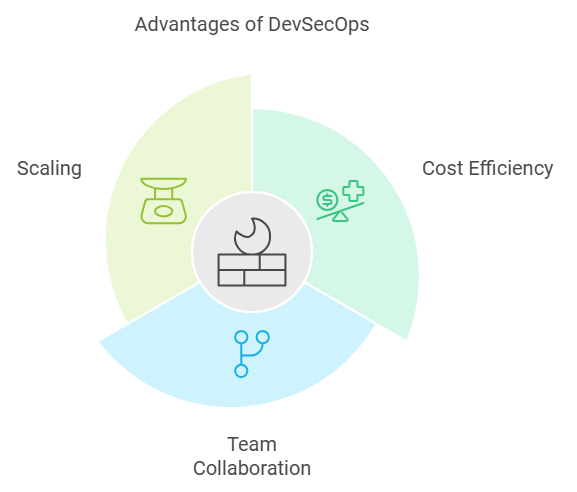
Challenges in DevSecOps implementation
Implementing DevSecOps can change the way software is developed by making security a part of every step throughout the entire process. However, organizations sometimes face significant hurdles while transitioning to this model.
1. Difficulty in adapting to new model
DevSecOps requires a mindset change where the three teams (developers, operations, and security) work together. Most of the organizations are accustomed to traditional workflows and the cultural shift can be difficult. DevSecOps models may take significant time to switch from the old working pattern.
2. Fear of development slowdown
Many companies have second thoughts in adapting DevSecOps workflow. There is a common misconception that the development faces downtime while integrating security into development workflows. Without proper automation of security checks, there are chances of delays.
However, activating security along the development process prevents costly and time-consuming fixes later in the cycle. Automating security gates can help maintain speed with protection.
Also Read : What is SaaS security posture management?
3. Lack of experts
Developers basically need an understanding of security principles. Likewise, the security professionals must familiarize themselves with development pipelines and automation tools. This skills gap often delays adoption as teams are in need of cross-training and reskilling to work effectively in a DevSecOps environment.
4. Complex tool integration
Modern development pipelines rely on various tools from different vendors For building, testing, and deployment various tools are used and some are complex and are not designed for traditional workflows. Training to adapt to the new tools would be a feasible way to solve this hurdle.

5. Increased visibility of threats
DevSecOps organizations may report more security breaches compared to DevOps teams. This is not because they experience more breaches, but because they have better tools to detect them. While this visibility is beneficial in finding vulnerabilities, it creates a perception that DevSecOps exposes companies to more risks.
6. Independent working of teams
In DevOps practice, developers focus on building features, whereas security teams assess risks later. DevSecOps breaks down this individually operating working model, requiring constant collaboration of teams.
Integrating among teams can cause struggles in teams that are not accustomed to working closely. Clear communication and understanding of the dependency can smoothen this transition.
Also Read : Proactive Threat Management For SaaS Business
7. Perception of high costs
Shifting to DevSecOps often involves upfront costs, including training, tool procurement, and process restructuring. While these costs may seem high, this in turn implies long-term savings by preventing security breaches.
8. Challenges with cloud security
As organizations increasingly adopt cloud infrastructure, improper configurations while implementing become a common security issue. Sometimes the developers may make configuration errors without adequate support from security teams. This leaves the applications inefficient.
DevSecOps FAQs
1.How to implement DevSecOps ?
To get started with DevSecOps, first assess your current security practices and set clear goals. Train your team on security roles, then integrate security tests throughout the development process using continuous integration. Apply security to Infrastructure-as-Code (IaC) and encourage team collaboration. Also keep monitoring for threats. Regularly review and improve security measures while staying aware of new risks. This ongoing approach helps your app stay secure at every stage of development.
2. What are the key steps involved in implementing a DevSecOps culture?
Collaborating among teams is the key to DevSecOps practice. There are several elements that makes for the implementation, here are those :
– Involve security teams early in the design process.
-Treat security as an enabler, not a blocker.
– Use automated tools to detect vulnerabilities early.
– Encourage collaboration between development, operations, and security teams.
– Empower teams with training, tools, and resources.
– Automate security checks in CI/CD pipelines.
– Continuously monitor applications in production.
– Shift security practices earlier in the development process.
3.How can DevSecOps helps collaboration between development, security, and operations teams?
Teamwork between development, security, and operations is the key to DevSecOps.Here security is a shared responsibility throughout the software development process. It encourages collaboration from the start, ensuring security is built in early. Using automated tools and continuous feedback, teams can quickly address security issues, making the software development process faster and more secure.



